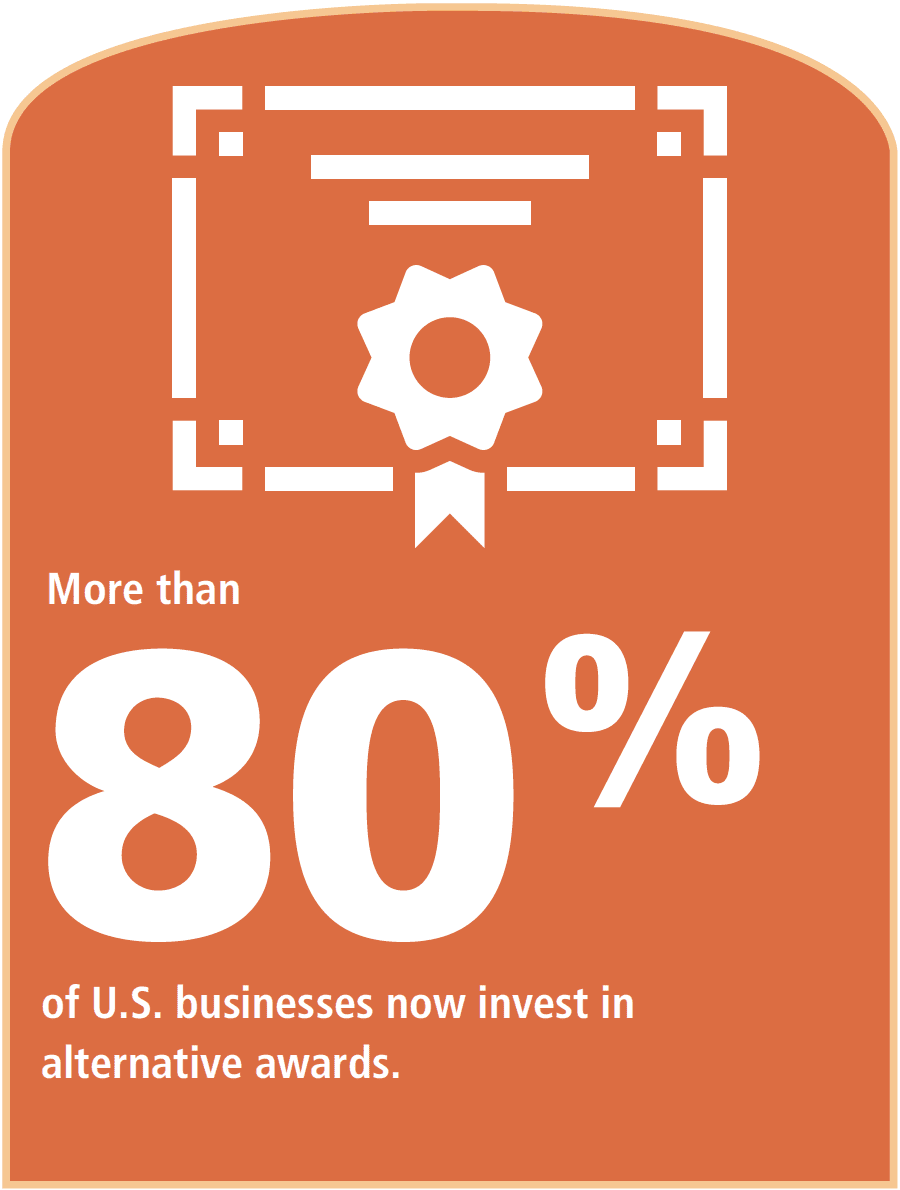Five trends are shaping the new world of employee recognition.
By Melissa Van Dyke
In today’s competitive job market, HR professionals are challenged to develop innovative and effective ways to attract and retain talent. Compensation matters, but how a company motivates and rewards its employees also has a tremendous impact on hiring and retention. More than 80 percent of U.S. businesses now invest in alternative awards, and the Incentive Research Foundation (IRF) sees several trends for 2019 that will likely have an impact on these incentive efforts. These trends also offer insights on how to design effective incentive, recognition, and rewards programs -and how they can give your company a competitive advantage.
The IRF’s 2018 Trends Study revealed five non-cash rewards and recognition trends that HR should consider to motivate their workforce and enhance their recognition programs:
- The C-suite is creating a “talent culture.” Incentives are increasingly embraced by the C-suite as executives become more invested in cultivating an engaging company culture. Empirical research findings are making it more apparent than ever that when organizations connect work to a larger purpose and mission, emphasizing intrinsic motivation over pay, they outperform their competitors. IRF’s research offers additional evidence that when executives combine economic incentives with recognition and well-designed non-cash rewards, they promote “corporate citizenship” behaviors. These behaviors and attitudes create the sort of work environment and culture that attracts and retains top talent.
- Predictive analytics and artificial intelligence (AI) are on the rise. Artificial intelligence has already profoundly changed aspects of human capital management, particularly in the arenas of sourcing and hiring. In the incentives field, predictive analytics and machine learning are beginning to help program designers understand who is drawn to which types of rewards, and how those rewards should be shaped and presented to produce the best outcomes on an individual basis. Reward program designers should focus on how they can leverage AI and machine learning in their work as soon as possible. In the longer term, they should imagine the various ways these technologies will disrupt the industry, and even notions of workforce productivity in general.
- The value of awards is increasing. Incentive travel continues to be a popular award in top-performing companies. Per person median spend in 2018 was reported at $4,000, while per person average spend for corporate buyers was $8,151 and $5,193 for agencies. This wide range and notable difference between the median and the average spend on incentives are the result of a growing number of outliers who are spending as much as $50,000 per person. The increase in spend is a strong indicator that the C-suite continues to see the effectiveness of incentive travel to motivate performance. This is also reflected in growth in spend on day-to-day rewards and recognition options. The average gift card value is currently $100, with $25 and $50 denominations also popular.
 Transformational experiences are key. In 2019, transformational travel will continue to push and extend the experience economy even further. Transformational travel proposes offering highly memorable, authentic experiences while connecting people with a deeper meaning that leads to personal growth. The concept of transformational travel incorporates concepts of wellness, sustainability, community, and personal fulfillment. Travelers create memories and stories that last a lifetime, are associated with the company that provided the trip, and ideally tie into their corporate culture. For high-end travelers and attendees, this drive for connection, fulfillment, and self-improvement may begin to trump other areas of the experience.
Transformational experiences are key. In 2019, transformational travel will continue to push and extend the experience economy even further. Transformational travel proposes offering highly memorable, authentic experiences while connecting people with a deeper meaning that leads to personal growth. The concept of transformational travel incorporates concepts of wellness, sustainability, community, and personal fulfillment. Travelers create memories and stories that last a lifetime, are associated with the company that provided the trip, and ideally tie into their corporate culture. For high-end travelers and attendees, this drive for connection, fulfillment, and self-improvement may begin to trump other areas of the experience.
- Agility and strategic program design will be the new normal. It will become increasingly imperative for program managers to apply design thinking to their process. The standard schedule and approaches of the past will no longer meet the needs of a well-traveled and experience-hungry generation. Designing for these increasingly savvy award winners will press the bounds of regular program planning, calling on HR to continuously test new ideas and incorporate changes quickly. Agile and interactive development techniques have long been in the technology and product development realms, but these concepts have since extended to HR elements as well. As planners adapt and develop programs in an agile environment, they will need to adopt a design-thinking mentality with continuous changes and the overlapping of ideas from many different domains.
Melissa Van Dyke is president of The Incentive Research Foundation. The entire report can be found here.














